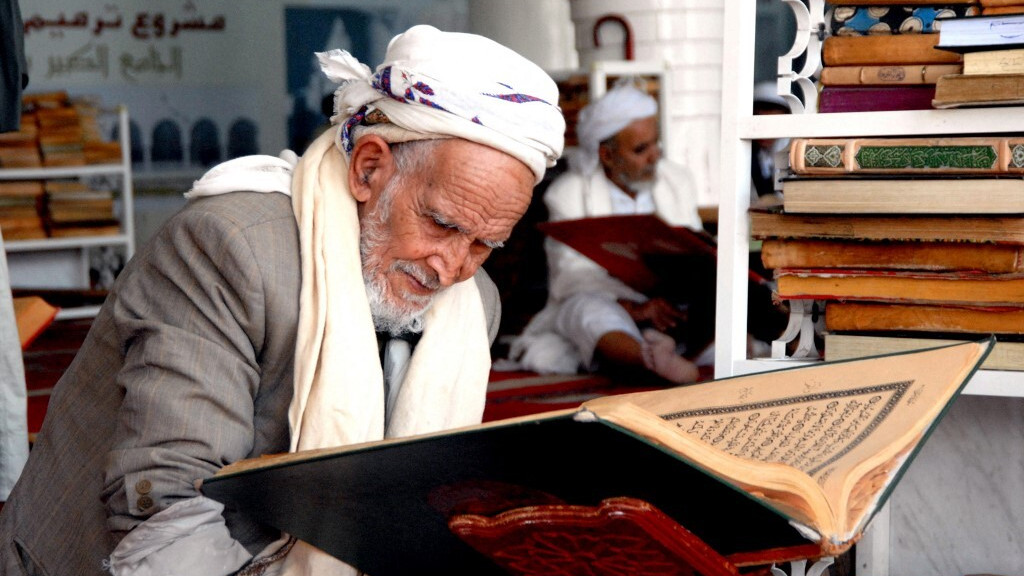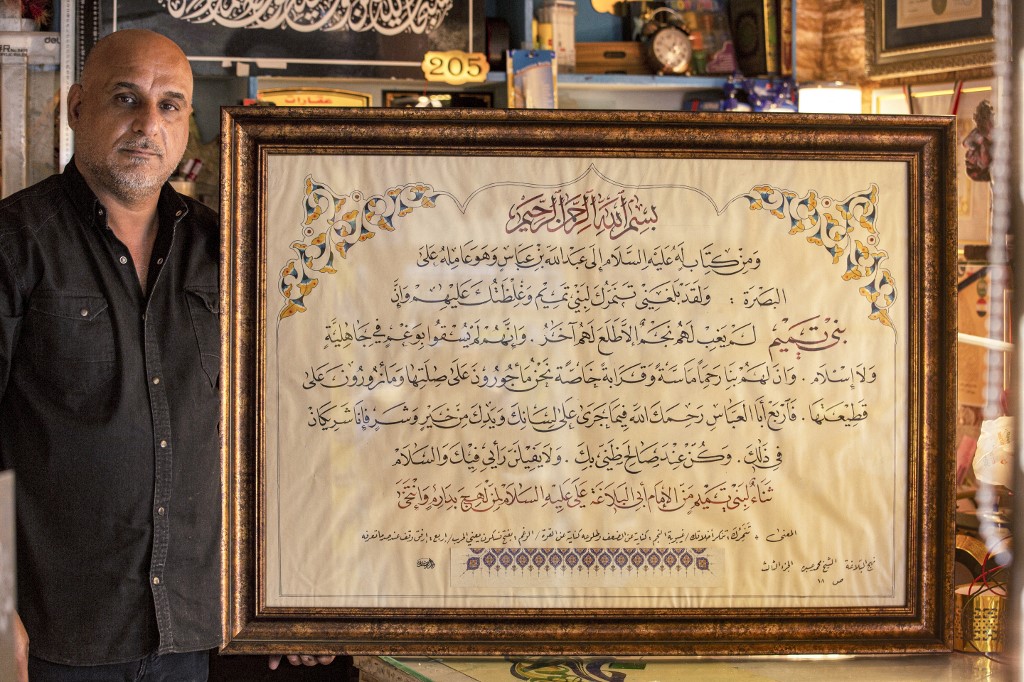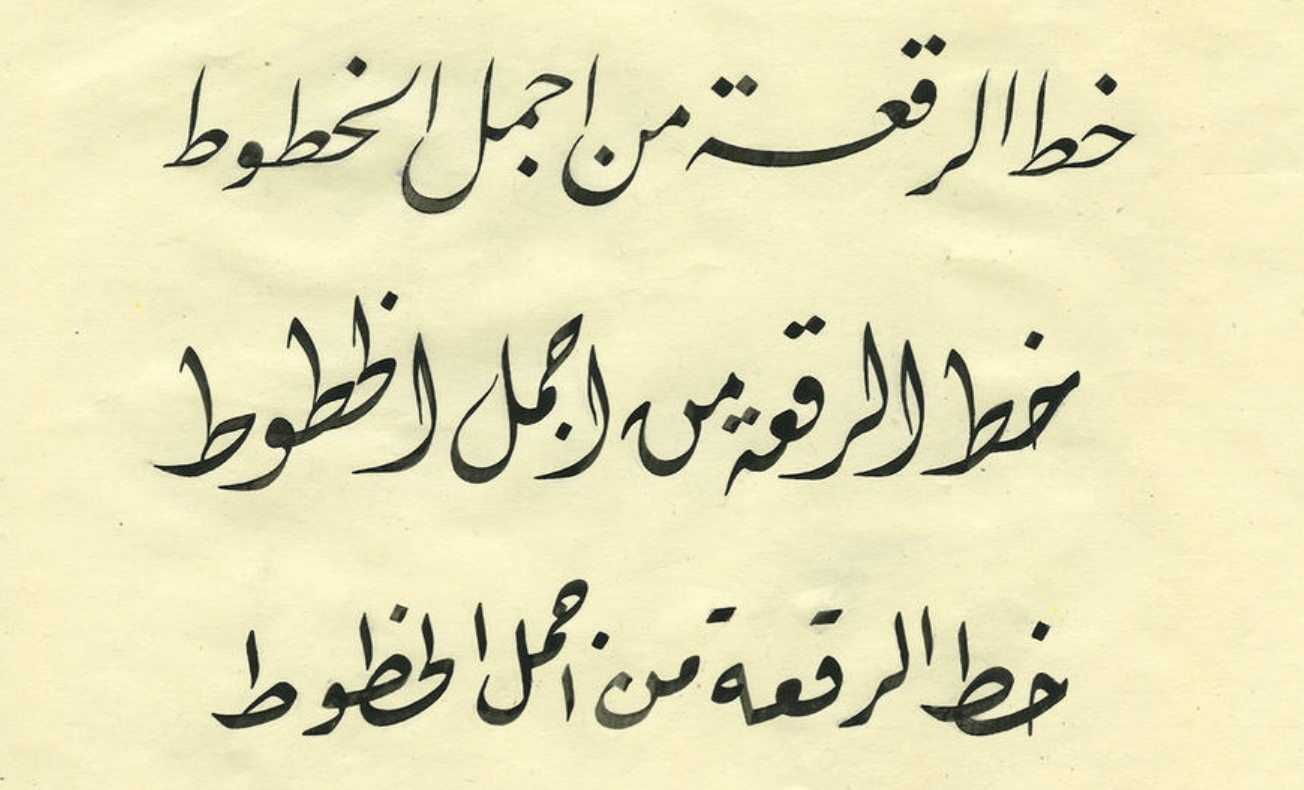Arabic calligraphy, recognizable in the logos of Arab brands such as Al Jazeera, is an art form that dates back centuries with a history rich in anecdotes.
Known for its flowing, curved characters, and mostly written by hand in colored ink on cardboard or thick paper, calligraphy forms an important part of the Arab cultural heritage of the Middle East, where those who study it spend years learning from their elders to master. this highly respected skill.
The original materials are parchment, leather and wood and one of the reasons why calligraphy arose was to keep track of and preserve scriptures such as the Koran.
Because it conveys the harmony and beauty of speech, calligraphy is often used to write poetry or powerful messages.
Much of the typeface’s appearance is due to the artist’s tools. To achieve the clean, smooth lines sought, calligraphers learn to sharpen their pens and prepare their own ink.
Traditionally, they used dried hollow reeds cut into points, as well as bamboo and other plants.
Over the centuries, Arabic calligraphy, inscribed by UNESCO in its list of intangible cultural heritage in 2022, has developed in various different forms.
Different styles emerged based on local influences and philosophical approaches, making it relatively easy to date the period in which a Qur’anic manuscript was produced and where it came from.
Middle East Eye looks at seven styles of calligraphy.
1. A cap
Originating from the city of Kufa in southern Iraq, once a center of Islamic learning, Kufa script is one of the most famous and abundant styles of Arabic calligraphy.
This style, which developed between the VIIe and thee century, is engraved on ancient mosques and palaces from Spain to North Africa through Iran, as well as in religious writings, especially in the first manuscripts of the Koran.
It was seen beginning to appear on tombstones, buildings and coins over the following centuries.
Kufic is known for its short vertical lines and long horizontal strokes, all in bold typography, with the final product often looking “square”.
The spaced aspect of this style made it relatively easy to read, which was useful for early converts to Islam who wanted to read the Koran. In this pre-print era, the task of reproducing the text would have been made easier by Kufic’s emphasis on clear, broad brush strokes.
2. The couch
This Ottoman style was introduced during the 16th centurye and XVIIe centuries, and is distinguished by its cursive and fluidity.
Widely used for ornamental and decorative purposes, the divani was developed during the reign of Sultan Suleiman the Magnificent by Housam Roumi.
During the reign of Suleiman between 1520 and 1566, it was used for important documents, decrees and legal correspondence.
It remained in official use until the 20the century, and today is used mainly on greeting cards and wedding invitations.
Its name comes from the word “divan”, an Ottoman administrative organization where high-ranking officials met.
Traditionally, the divani was written in black ink or gold paint. The tracery also made it more difficult to read than other styles.
3. The tutu
“Third” in Arabic, the name thuluth comes from the fact that this style was a third the size of the other styles used during the Umayyad period.
Requiring complex knowledge to master in terms of proportions, the Thuluth is characterized by its curved letters and its slightly cursive appearance.
This style of typography was rarely used to write the Qur’an, and is mostly found on manuscripts, tombstones and ceramics.
The cloth covering the Kaaba in the Muslim holy city of Mecca is a notable example of tuluth.
This calligraphy is often used in art to represent the shape of animal or human figures.
Because of the character spacing and slightly larger typography, it is easier to read than other styles.
4. The birth
Naskh, which means “to copy” in Arabic, is a rounded, flowing form of calligraphy that is primarily used to transcribe the Qur’an and other Islamic scriptures, as well as literary and cultural manuscripts.
It is easy to read and evidence of its use dates back to the first century after the creation of Islam.
This style, slightly smaller than other forms of calligraphy, allows the writer to move the pen more quickly and is therefore convenient for copying large texts.
It was probably popularized by the calligrapher and Abbasid minister Ibn Muqla al-Shirazi in the 9th.e century and comes from Kufic writing.
Later Turkish and Arabic calligraphers also helped develop this style.
5. Rayhani
The name rayhani comes from the plant called rayhan, which means “fragrant plant” and refers to myrtle or basil.
This script gets its name from its easy-to-read and aesthetic style. It is used for Quranic text.
The rayhani is said to have originated during the Abbasid era. Its invention is attributed to Ibn As-Sitri, who spent his career refining earlier calligraphy manuscripts.
As a law student, he memorized the entire Qur’an and produced 64 copies by hand.
Rayhani has a striking dot on the initial letters of words, which distinguishes it from other manuscripts. It has more pointed letters than the Naskh style.
6. The muhaqqaq
The term muhaqqaq means “fulfilled” or “clear” in Arabic and was used to describe any exceptional calligraphy.
Because of its legibility, it was a favored style for transcribing the Qur’an, and is considered one of the most beautiful forms of Arabic writing by calligraphers.
One of the first references to the muhaqqaq style is found in the Kitab al-Fihrista collection of knowledge and literature in the Islamic world of the 19th centurye century, compiled by Idn al-Nadim.
The book served as a reference work for medieval and Islamic literature.
7. The riqa
Developed at the end of the 19th centurye century, this style of calligraphy includes elements of Thuluth, but is more rounded and has shorter horizontal lines.
The word riqa comes from the Arabic name ruqa, meaning a piece or piece of material – this name was given to this style because people used it on small pieces of parchment.
This densely structured style of writing was favored by Ottoman calligraphers and refined by the creators of the empire.
It is notable for being similar in quality to ordinary handwriting while retaining the elegance and aesthetic qualities of traditional calligraphy.
Today this style is used in modern graphic design, magazines and advertisements.







